- Author: Jeffrey P Mitchell
Folks,
We're going to put an end to CT Crop Quiz #99 right now due in part to the flurry of comments, concerns and wrong answers that came in, - everything from “This quiz is too hard,” to “You're too tightfisted with the $100 awards.” So to end this one now, - which I said was a bit of a weird one anyway, - here are the answers to the quiz questions. We'll need to wait for quiz #100 for a possible winner, I guess.
Jeff
From August 27, 2017
Folks,
OK. We've got a bit of a weird one here today in CT Crop Quiz #99.
Everyone by now knows the rules. Be the first to answer the following questions correctly and you'll receive our Workgroup's legendary $100 cash award at an upcoming event. Any CASI members directly associated with this quiz photo or any of their family members are not eligible to take part in the quiz process and will be disqualified from consideration.
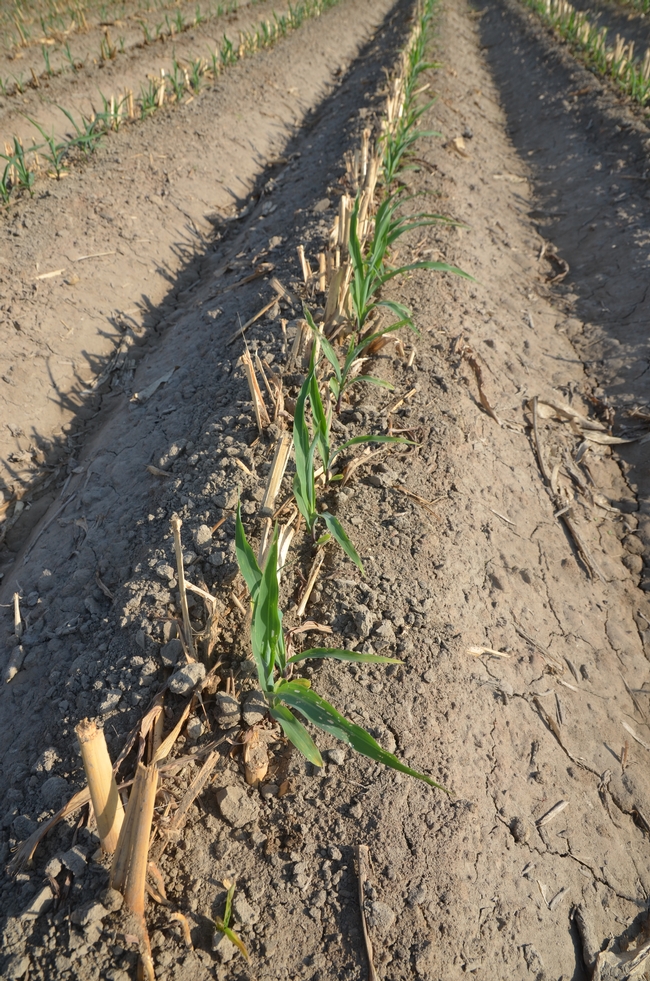
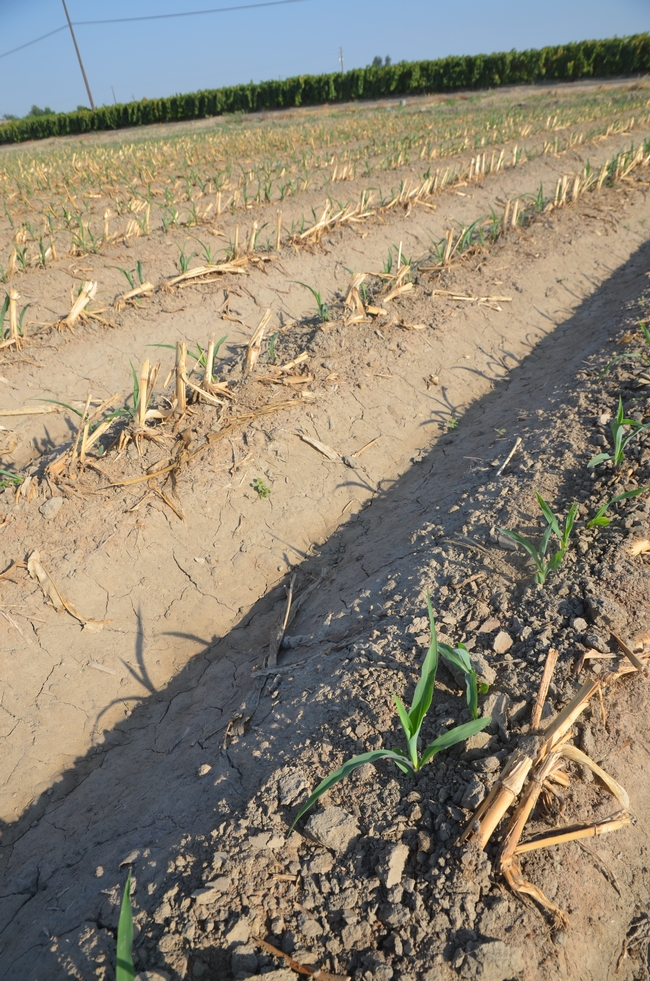
An odd one here maybe. Following an early-season corn silage harvest, it was a one-pass harrowing tool and then a corn planter going right back over the planting beds and corn stubble line to establish the double corn crop. So, technically, - the spouse of the farmer who did this told me that they ‘clawed' the sparse residue from the first corn crop with a spike-toothed harrow to just loosen up the surface soil a bit, and then planted right into the first corn crop's stubble.
What is the CT-planted crop shown in this photo?
corn
How was this CT crop actually established? (What specific operation(s) were used?)
Following a harrow operation to loosen up the soil surface, the second corn crop was planted into existing corn lines and beds
Name the nearest US town to where this CT crop photo was taken.
Kingsburg, CA
What is the nearest street intersection adjacent to the field where this photo was taken?
SE corner of Mendocino Avenue and Kamm Avenue
Using the old definition for “CT,” would this field even be considered “CT?”
No. There is not much surface residue at all in this field. It therefore wouldn't conform to the old definition for “CT” that talked about the need for > 30% surface residue after planting time. In fact, it was pointed out to us by longstanding good colleague and CASI supporter, Don Reicosky, that we out to move forward and update ourselves with these “CT Crop Quizzes” a bit and not hang onto the outdated and confusing “CT” terminology. Please see Don's suggested reading that is attached. – I fully agree and henceforth, we'll move forward with the broader term, “conservation agriculture.” But this field and these photos are still then not a true representation of CA, as we know.
All the best,
Jeff
- Author: Jeffrey P Mitchell
Again, unfortunately no winners for CT Crop Quiz #97. Answers are below.
From June 17, 2017
Folks,
On the heels of last month's admittedly tough CT Crop Quiz #96, here you go with yet another installment in our series of conservation agriculture challenges. As always, be the first to answer the following questions correctly and you'll receive our Workgroup's legendary $100 cash award at an upcoming CASI event.
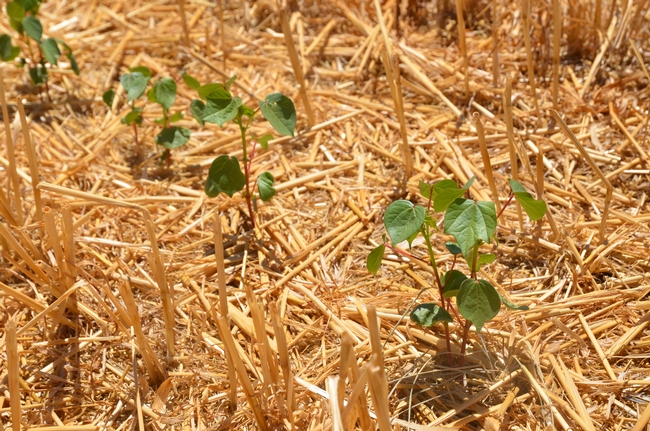
no-tillage cotton seeding
What is the CT-planted crop shown in this photo?
cotton
What were the reasons for planting this CT crop in this manner and context?
to double crop following wheat, increase crop income
Name the nearest US town to where this CT crop photo was taken.
Goodyear, AZ
For about how long have the CT planting seeding techniques that are shown in the quiz photo been used at this planting site?
twenty years
A You tube video on this CT planting field is available at https://youtu.be/04XJR1tzuGI
All the best,
Jeff
- Author: Jeffrey P Mitchell
Unfortunately, we had no winners for CT Crop Quiz # 96. This one might have been a more challenging quiz due to the image that was circulated and it no doubt frustrated many folks who routinely participate in our quiz series. Here are the answers for CT Crop Quiz #96.
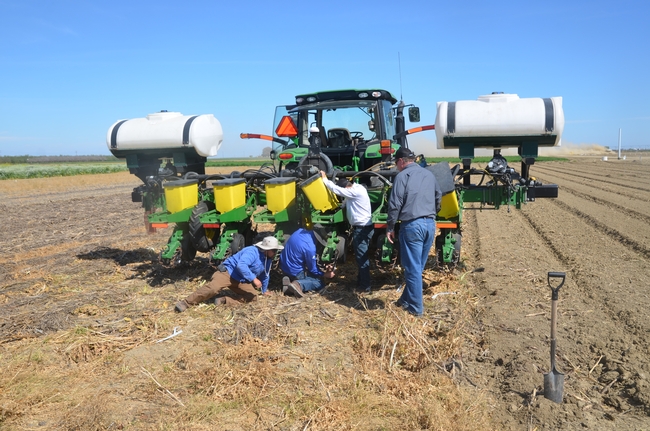
This was an example of no-till planting.
What is the CT-planted crop shown in this photo?
Garbanzo (Cicer arietinum)
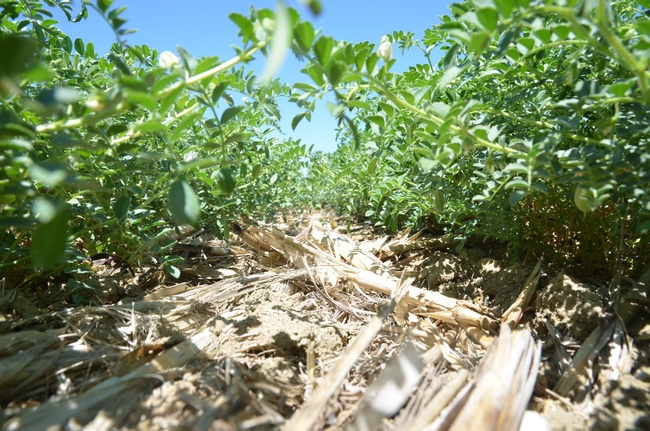
To evaluate opportunities for saving money, sustaining reduced disturbance, high residue production options in California's San Joaquin Valley, to diversify crop entries in the long-term NRI Project in Five Points, CA
Name the nearest US town to where this CT crop photo was taken.
Five Points, CA 93624
What was special about the planter that was used for this CT crop?
This planter that was used was an 8-row no-till John Deere planter that was specially equipped with a number of important features including the Delta Force down force after-market modifications available through Precision Planting (http://www.precisionplanting.com/#products/deltaforce/). The planter was loaned to our NRI Project research team by California Ag Solutions of Madera, CA. Matt Rossow, Cary Crum, and Silas Rossow of CAS helped us on the planting day with adjustments and settings. This was the third year in a row that no-till garbanzos had been planted and was a particularly challenging operation due to the high level of residues that needed to be negotiated from last year's grain sorghum crop.
The NRI Project 2017 garbanzo and sorghum field was showcased in our recent soil management training event that was held on June 6th at the site.
All the best,
Jeff
- Author: Jeffrey P Mitchell
We have a second-in-a-row CT Crop Quiz winner, folks!
Dr. Kabir Zahangir of the USDA NRCS Soil Health Division in Davis, CA correctly provided the first set of answers to CT Crop Quiz # 89 which means that he is the recipient of the $100 award. Congratulations, Kabir, on submitting the correct answers.
What was shown in this quiz photo was the cover crop roller-cutter that Alan Sano and Jesse Sanchez are using at their farm in Firebaugh, CA this year. Over the past several days, the roller has been working its way across all of their pre-tomato cover crop acreage as shown in the photo.
Here are the answers to the questions for CT Crop Quiz #89.
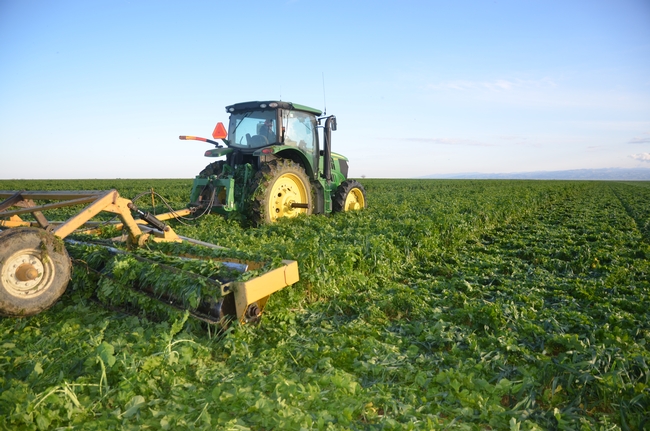
rolling, cutting a winter cover crop with a ground-driven sharp-bladed roller
What is the crop or plant material that is shown in the photos?
a winter mixture of cover crops including mustard, radish, and triticale
Where is the farm field where this is taking place located? Give the nearest town and state.
Firebaugh, CA
Why is this farmer doing this conservation agriculture practice? Give the specific reasons.
to add carbon to the soil and improve the tilth of the soil
Give an estimate to the nearest hundred pounds for the amount of dry biomass that is being contributed to this field by this practice.
roughly 9,000 lbs of dry matter per acre
By being the first to provide correct answers to the questions of CT Crop Quiz #89, Kabir will now receive the $100 cash award at one of our CASI Workgroup's events this summer.
Because there have been two back-to-back winners recently, maybe we need to begin making the CT Crop Quiz once again more difficult in the future.
We'll be posting videos of the roller as well as similar work that is being done in the long-term NRI Project in Five Points soon at You Tube for anyone who's interested.
All the best,
Jeff
- Author: Jeffrey P Mitchell
Folks,
Well, - we have a winner for CT Crop Quiz #88! This breaks the drought and hopefully reinvigorates the morale that seemed to be waning in recent quizzes due to what some folks thought were the “too-hard-to-answer” photos and questions.
Tom Willey, a farmer and CASI Workgroup member in Madera, CA, was the first respondent to successfully provide suitable answers to the questions of this Quiz. Congratulations, Tom! He'll receive his $100 award at our next major Workgroup event.
Here are the answers to the four questions of this quiz.
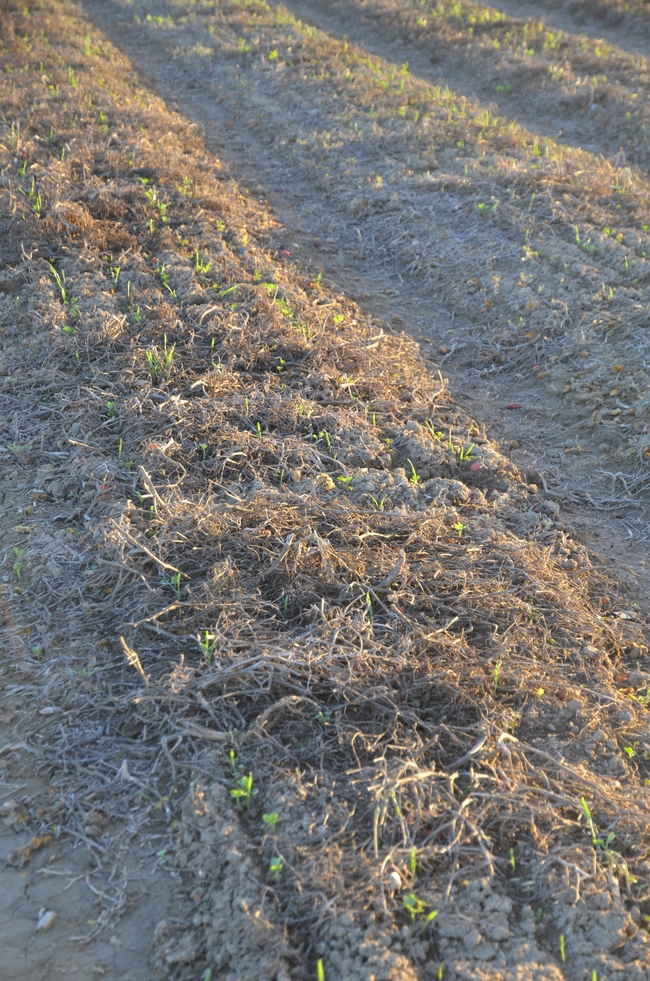
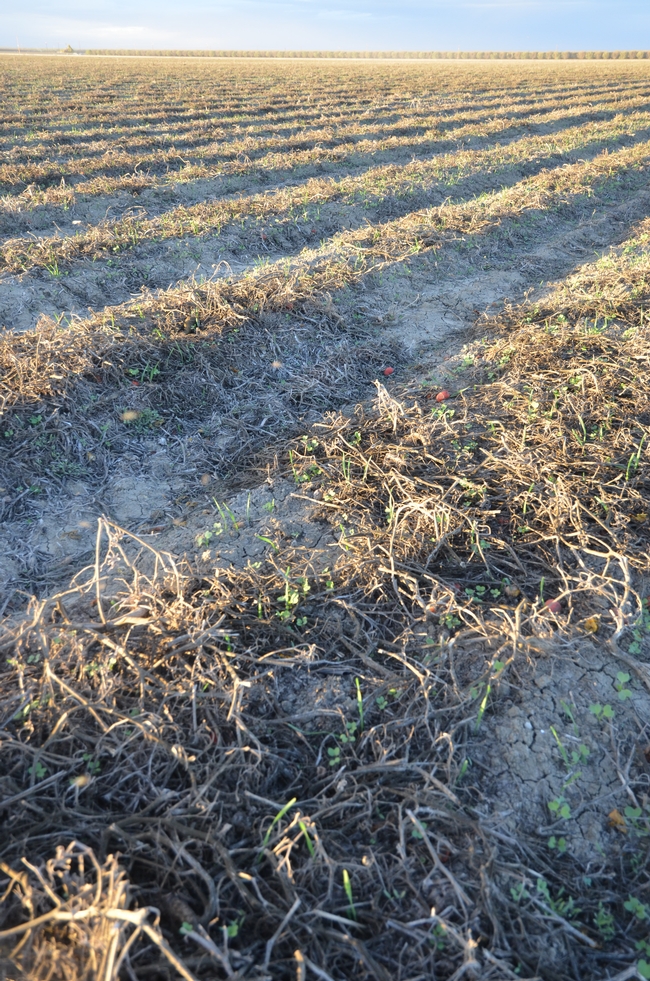
The form of CT that was shown in the photos was no-tillage. What was shown was a 2016 – 2017 winter cover drop sown directly into residues of a 2016 tomato crop following harvest.
What is the CT-planted crop shown in this photo?
The photos showed a cover crop of triticale, mustard and radish that was no-till seeded into the tomato residues on 60” beds.
What were the reasons for planting this CT crop?
In the direct words of Jesse Sanchez and Alan Sano of Sano Farms, the overall goal of their planting cover crops is to improve soil health, increase organic matter, fight pathogens, and improve the tilth of their soil.
Name the nearest US town to where this CT crop photo was taken.
Sano Farms is located near the town of Firebaugh, CA in western Fresno County.
Alan Sano and Jesse Sanchez have been using cover crops at their farm for nearly ten years. You can learn more about the systems they've developed by looking at the USDA NRCS summary of their soil care practices at the link https://www.nrcs.usda.gov/wps/portal/nrcs/detail/ca/soils/health/?cid=nrcseprd406062, or by viewing the accompanying Soil Health Profile video at https://www.youtube.com/watch?v=x6qasMQz7l0&feature=youtu.be
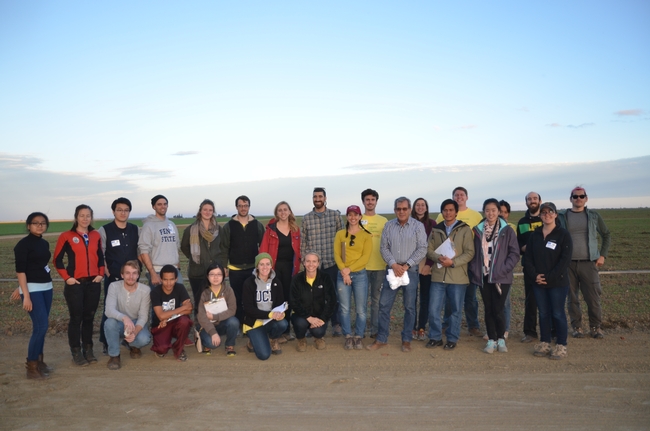
Next week, National Public Radio is coming out to their farm to conduct an interview with them.
If you weren't successful with your submission for CT Crop Quiz #88, do not despair. There'll be many more opportunities in the future. We had a number of quite close submissions this round. Good going, everyone!
All the best,
Jeff


